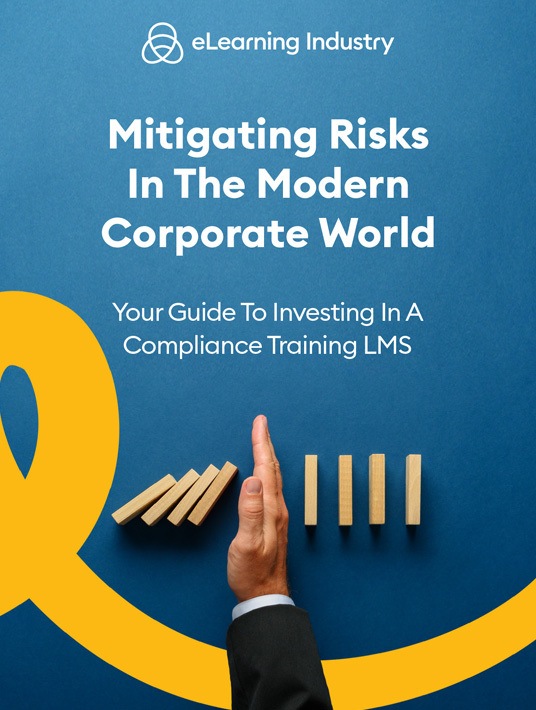How To Plan And Carry Through An Accurate Budget
Compliance training can spare you the expense of medical bills from on-the-job accidents, regulatory fines, and trying to repair a tarnished reputation. Thus, implementing an LMS is well worth the investment. But only if you plan ahead and set a realistic budget that accounts for all the costs involved. This allows you to find a Learning Management System that falls into your price range and has all the features you’re looking for—and can afford. So, how do you create a spot-on compliance training LMS budget and stick to it?

8 Tips To Create An Accurate Compliance Training LMS Budget
1. Identify Compliance Gaps That Your New LMS Must Address
There are certain areas for improvement that your new compliance training LMS needs to remedy to warrant the investment. Otherwise, you still run the high risk of violating regulations and dealing with on-the-job injuries—or worse. The crux of your LMS budget should hinge on these compliance gaps you must bridge. For example, you may need a more advanced system with interactive resource support and robust reporting to remedy serious infractions.
2. Time Is Money: Account For The Learning Curve And Implementation
Even if your team is experienced with LMSs, they may still need time to master the new platform’s features and functions. As such, your compliance training LMS budget must account for the time it will take to learn its nuances and maximize functionality. You also need to consider how long it’s going to take you to implement the system. For instance, how much time should you set aside for migrating data or customizing the interface?
3. Determine Which Features You Need Vs. Those You Want
There are certain features that you absolutely need to deploy effective compliance training. Then, there are those that would be nice but can go by the wayside when push comes to shove. It’s crucial to differentiate the two in order to create an accurate budget and work with what you have. This also gives you the opportunity to inventory your assets to determine which tools mesh with your new Learning Management System to ensure compatibility.
4. Assess The Support Options
Every LMS vendor offers a different range of support services. Some might provide a more basic online FAQ and online training resource library. Others have 24/7 phone support and one-on-one help setting up the LMS. However, the latter might involve a greater investment since you’re getting more advanced support services. Evaluate your team’s talents and experience to see how much support you actually require. Then, factor this into your compliance training LMS budget.
5. Don’t Forget The Hidden Fees
You never know whether hidden fees could be lurking around the corner just waiting to show up on your next billing statement. Unless, of course, you plan ahead and ask the LMS vendor for an itemized breakdown of the costs. There are some costs that they cannot estimate, however, such as online training content development fees, ongoing maintenance, and payroll expenses. So, make sure your LMS budget includes all the items that are often overlooked so that you can stick to it, rather than having to add in the hidden fees a month later.
6. Evaluate The Pricing Models
There are numerous pricing models and payment structures to choose from. Do you want a compliance training LMS that involves one up-front licensing fee? Are you searching for a platform with a monthly payment plan that’s based on a subscription model? Some LMS vendors may even offer a discount if you pay in advance and/or put your credit card on file for automatic payments. You may be tempted to opt for free LMS solutions. However, these also come with their fair share of costs. For instance, you have to train your team on how to use the LMS, customize the coding, and purchase additional software to fill the feature gaps.
7. Meet With The Vendor To Discuss Your Options
The compliance training LMS landing page, online reviews, and demo videos give you a good indication of what the LMS vendor can offer. However, it’s always a good idea to meet with them to discuss your options and ask questions that can help you create an accurate budget. For example, clarify what’s included in the package and if you have to pay for upgrades or updates. Are there add-ons that may be worth the investment that you should add to your itemized budget?
8. Use LMS Metrics To Continually Improve Resource Allocation
Your budget is never set in stone. You shouldn’t stick to it simply for posterity's sake if it isn’t making the most of your online training resources. There are always opportunities to cut costs or improve allocation. Use LMS metrics to identify areas that require your attention. For example, keep in mind that reports reveal that employees simply aren’t engaging with the compliance safety course. Surveys and polls tell you they need more social learning elements or gamification incentives. Thus, you may need to upgrade your LMS package to boost employee productivity, even if it does take a bite out of your budget. Just think of how their increased performance will translate into higher sales and better employee retention. It’s not just about the monetary factors in play, but the intangible performance enhancements that translate into a higher ROI.
Developing an accurate budget that affords you everything you need from a compliance training LMS, without "borrowing" online training resources from other business operations, is essential. However, sticking to it is even more crucial. Evaluate all your options, decide on the best pricing model, and meet with the LMS vendor to ask the pressing questions. Then, use your metrics to guide your efforts and allocate your online training resources more effectively.
Looking for more tips to mitigate risks without breaking the bank? Download our eBook Mitigating Risks In The Modern Corporate World: Your Guide To Investing In A Compliance Training LMS to learn how to choose the best LMS for your organization and avoid the most common implementation mistakes. It also offers tips on how to narrow down your list of must-have features so that you get the best value for money.

